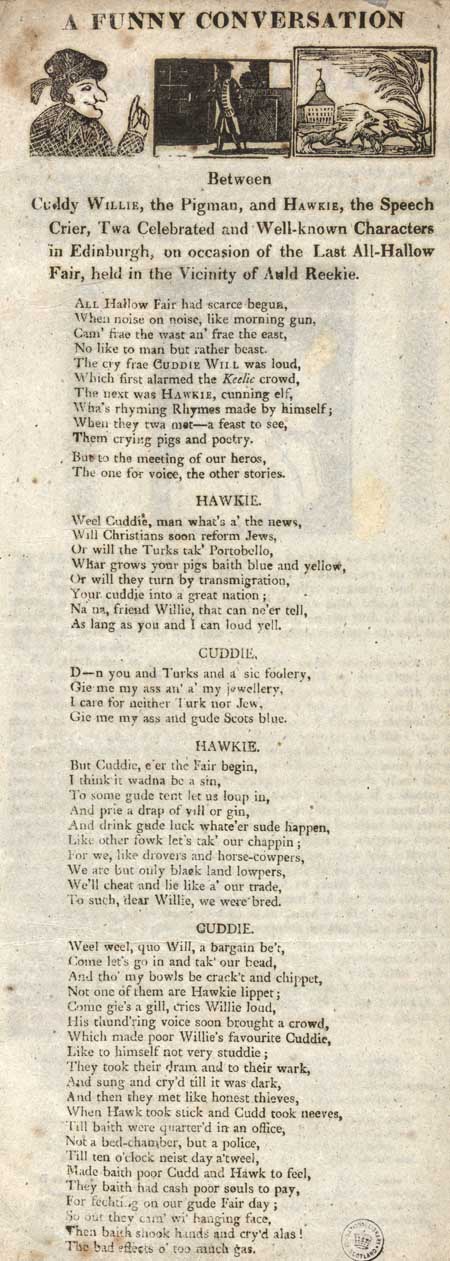Commentary
This poem is introduced by a bit of text that reads: 'A FUNNY CONVERSATION Between Cuddy WILLIE, the Pigman, and HAWKIE, the Speech Crier, Twa Celebrated and Well-known Characters in Edinburgh, on occasion of the Last All-Hallow Fair, held in the Vicinity of Auld Reekie.' The dialogue structure, as exemplified here, was quite common in Scots poetry in the eighteenth and nineteenth centuries, partly due to its popularity with the great eighteenth-century poets Robert Fergusson and Robert Burns. The dialogue form was derived from classical models, particularly the work of Plato. Whereas in the classics the form was the basis of a serious philosophical debate, in Scotland it was often used ironically, to satirise the opinions and pretensions of two comic characters. In this example 'Cuddy Willie' and 'Hawkie' start by discussing world affairs but end up in prison after a drunken brawl. The 'Hawkie' referred to is possibly the well-known Glasgow street character of the mid-19th century. Born William Cameron, near Stirling in 1790, he became famous in Glasgow as a writer and seller of 'last words' and chapbooks. He also plied his trade in Paisley and Edinburgh. Broadsides are single sheets of paper, printed on one side, to be read unfolded. They carried public information such as proclamations as well as ballads and news of the day. Cheaply available, they were sold on the streets by pedlars and chapmen. Broadsides offer a valuable insight into many aspects of the society they were published in, and the National Library of Scotland holds over 250,000 of them.
View Transcription | Download PDF Facsimile
|
 |
Probable date of publication:
1828 shelfmark: F.3.a.13(122)
 View larger image
View larger image
|


